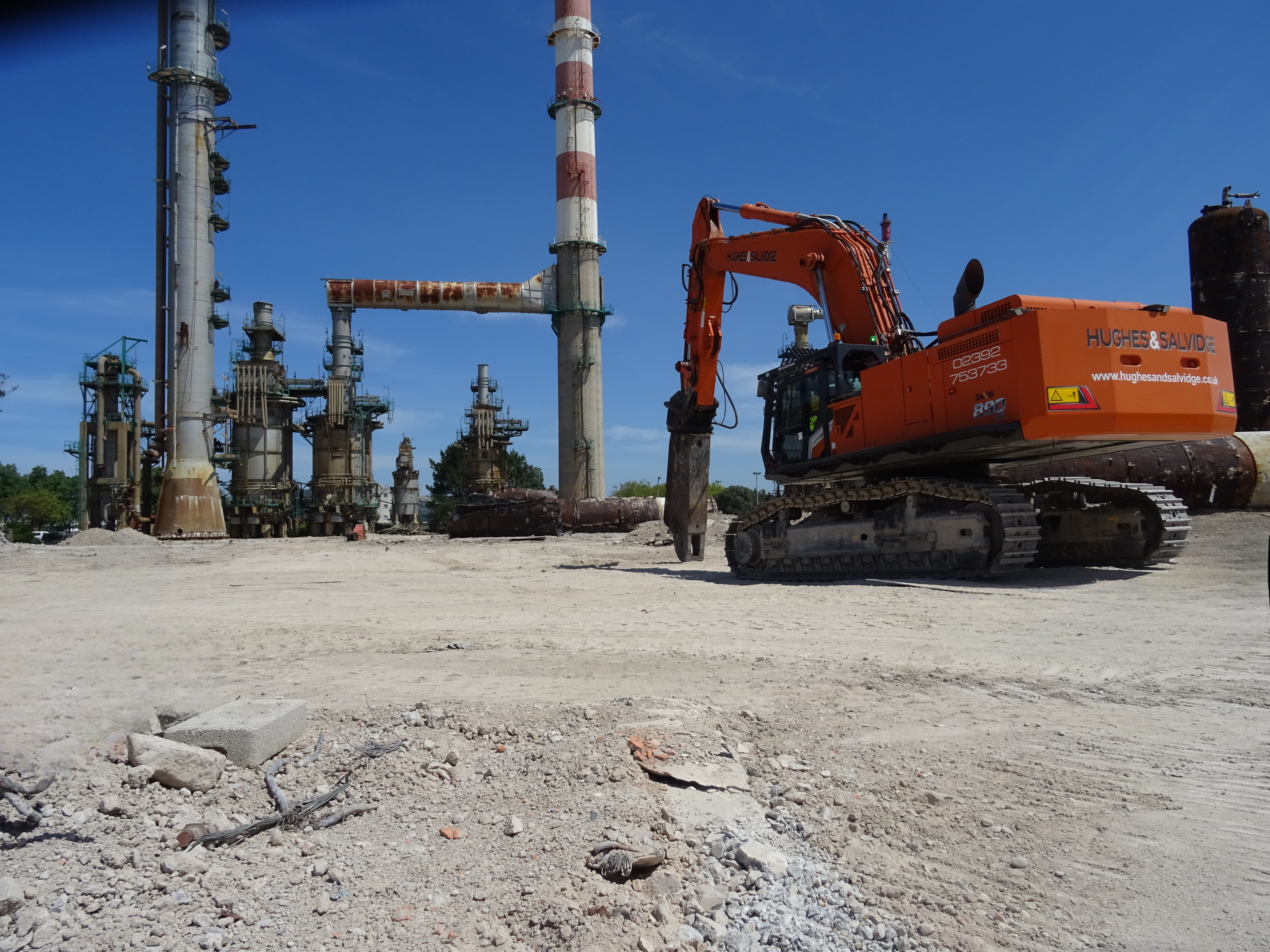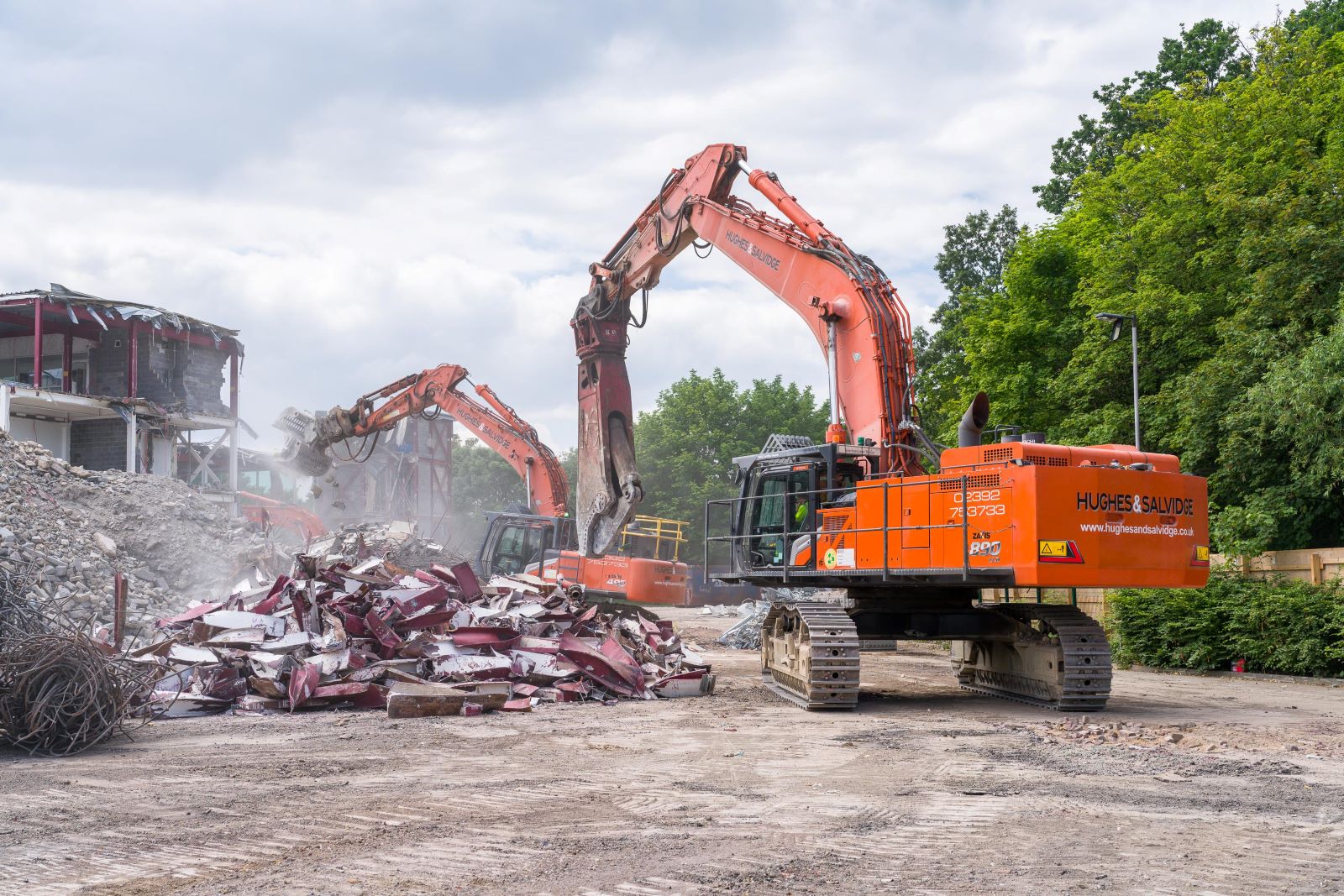What machines are used on a demolition project?
Luke Gould 1st October 2024
No two demolition projects are the same; each and every one has different requirements depending on factors such as the condition, size, and location of the building being demolished, and the timeframe in which the project needs to be completed.
One thing all demolition projects have in common is that they will require a range of specialist equipment to be utilised in order for the project to be completed safely.
Whether the project involves the demolition of a high-rise block of flats or works to a listed building, all demolitions require careful planning and execution. When it comes to choosing the right machines to use, the size, environment and location of the structure must always be considered.
Here at Hughes and Salvidge, we carry out demolition work on a wide variety of building structures across a number of sectors, ranging from industrial and aerospace to chemical and nuclear. We ensure that every possible factor has been considered so that the correct method of demolition and machinery is chosen for the job at hand.
Safety Considerations
Safety is our top priority when operating machinery on demolition sites. Each of our operators and supervisors undergoes extensive training, and all of our equipment complies with the latest health and safety regulations. At Hughes and Salvidge, we ensure that all demolition tasks are conducted under strict safety protocols, including continuous equipment inspections and the use of personal protective equipment for all operatives.
Environmental impact and sustainability
In addition to safety, environmental responsibility is at the heart of our demolition projects. We utilise machinery for dust suppression and work closely with our associated company, H&S Metals, and other salvage companies to ensure that over 97% of demolition materials are recycled. Our modern equipment not only improves efficiency but also helps minimise the environmental impact by reducing noise pollution and ensuring that waste is processed effectively and repurposed where possible.
Innovation and technology
As part of our commitment to delivering efficient and innovative solutions, we continuously invest in the latest demolition technology to ensure that each project is completed with the highest levels of precision and care.
What equipment is used on a demolition site?
A wide variety of equipment is utilised on our demolition sites, including:
Excavators
Excavators are used for an array of demolition tasks and you will find them on the majority of demolition sites. Powerful, robust, and incredibly work efficient, this piece of equipment is used to demolish everything from small scale projects to multi-storey buildings.
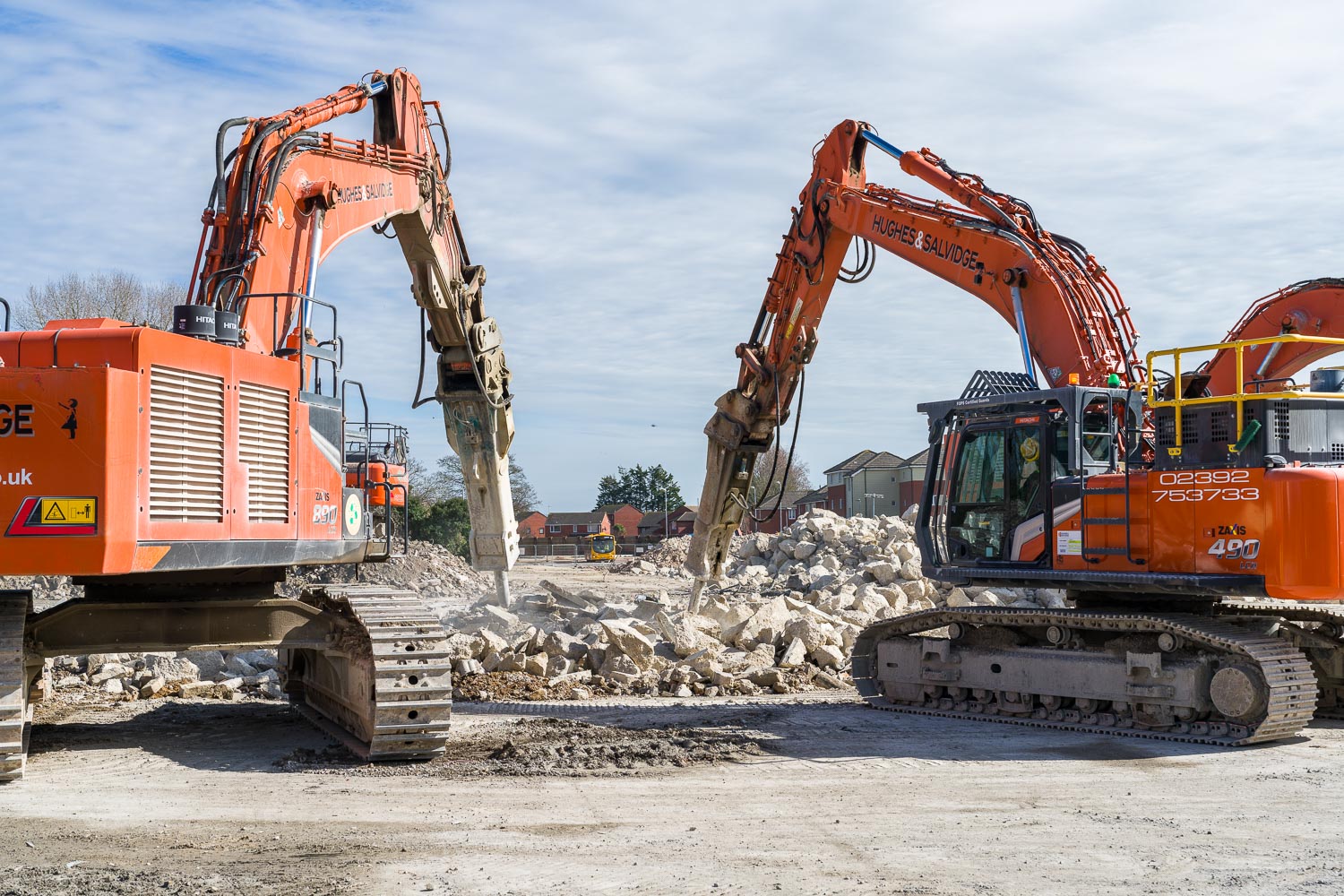
Machinery for Low-Level Demolitions
For houses and other small buildings that are only one or two storeys high, the demolition process is reasonably straightforward. Small buildings can be demolished by hand, although this is not the most time-effective option.
Small buildings can also be pulled down mechanically with the use of specifically-designed demolition excavators. Hydraulic excavators are essentially tracked plants that demolish small buildings. We operate 1-tonne to 100-tonne excavators and the range in both size and function allows the excavators to work on a variety of tasks within various project areas.
Here at Hughes and Salvidge, we use a variety of different attachments to suit the job at hand. Another key benefit to using hydraulic excavators for demolition is their ability to perform several different tasks with the use of different attachments such as rotational grapples, pulverisers, steel shears and impact breakers.
Equipment for High-Level Demolitions
The use of high reach excavators is a relatively modern method of demolition and involves the use of a machine with a particularly large boom arm. Designed to reach the upper storeys of multi-storey buildings, these excavators have, in some instances, taken away the need for scaffold and demolishing buildings using mini excavators.
Excavators are equipped with different tools such as pulverisers, shears, breakers, and selector grab attachments – each attachment has a function in the work carried out by Hughes and Salvidge. High reach excavators can be used on various building structures such as steel, concrete and mixed material.
Hughes and Salvidge has a wide range of demolition machinery in addition to excavators, which is utilised on demolition projects of various sizes, for a number of different functions. These include:
Dust suppression machines
Used for dust suppression during the demolition process, our machines minimise dust pollution in the immediate environment by spraying a fine mist of water onto the demolition.
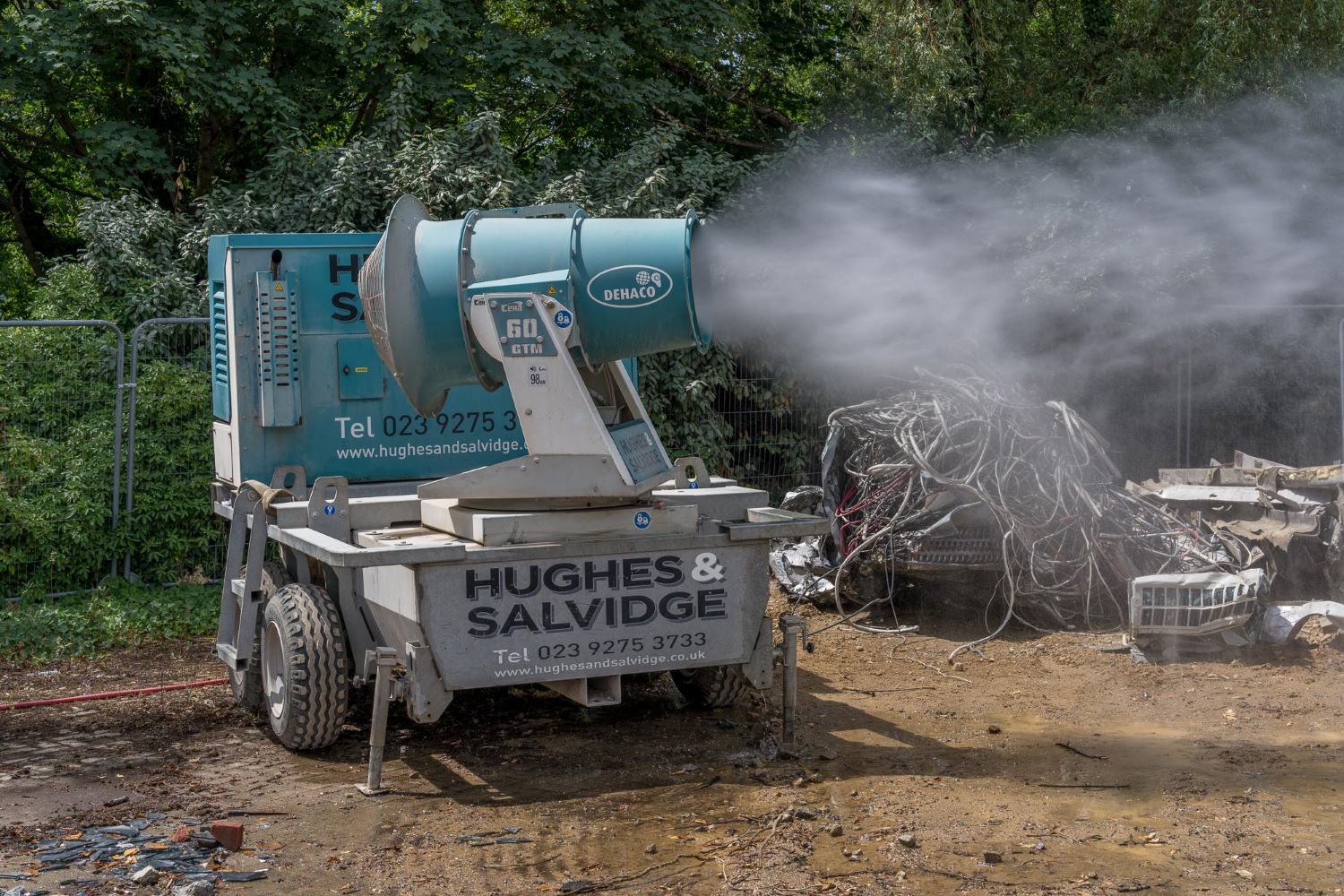 Dust suppression
Dust suppression
Skid steer loaders
Incredibly versatile, skid steer loaders are powerful, compact, rigid, and perfect for performing a wide range of tasks on smaller demolition sites, quickly and easily. One of the main benefits of this piece of equipment is that the front bucket of the machine can be replaced with various attachments, meaning it’s easy to undertake different jobs and tasks.
Low loaders
Transporting large excavators and crushers from site to site.
 Low loader transporting large-scale equipment
Low loader transporting large-scale equipment
Concrete crushers
Our associated company, K&B Crushers, operates 10 mobile concrete crushers – the largest fleet in the UK. This plant is used for producing recycled aggregate from demolition brick and concrete arisings. Recyclability on the majority of Hughes and Salvidge projects is above 97%.
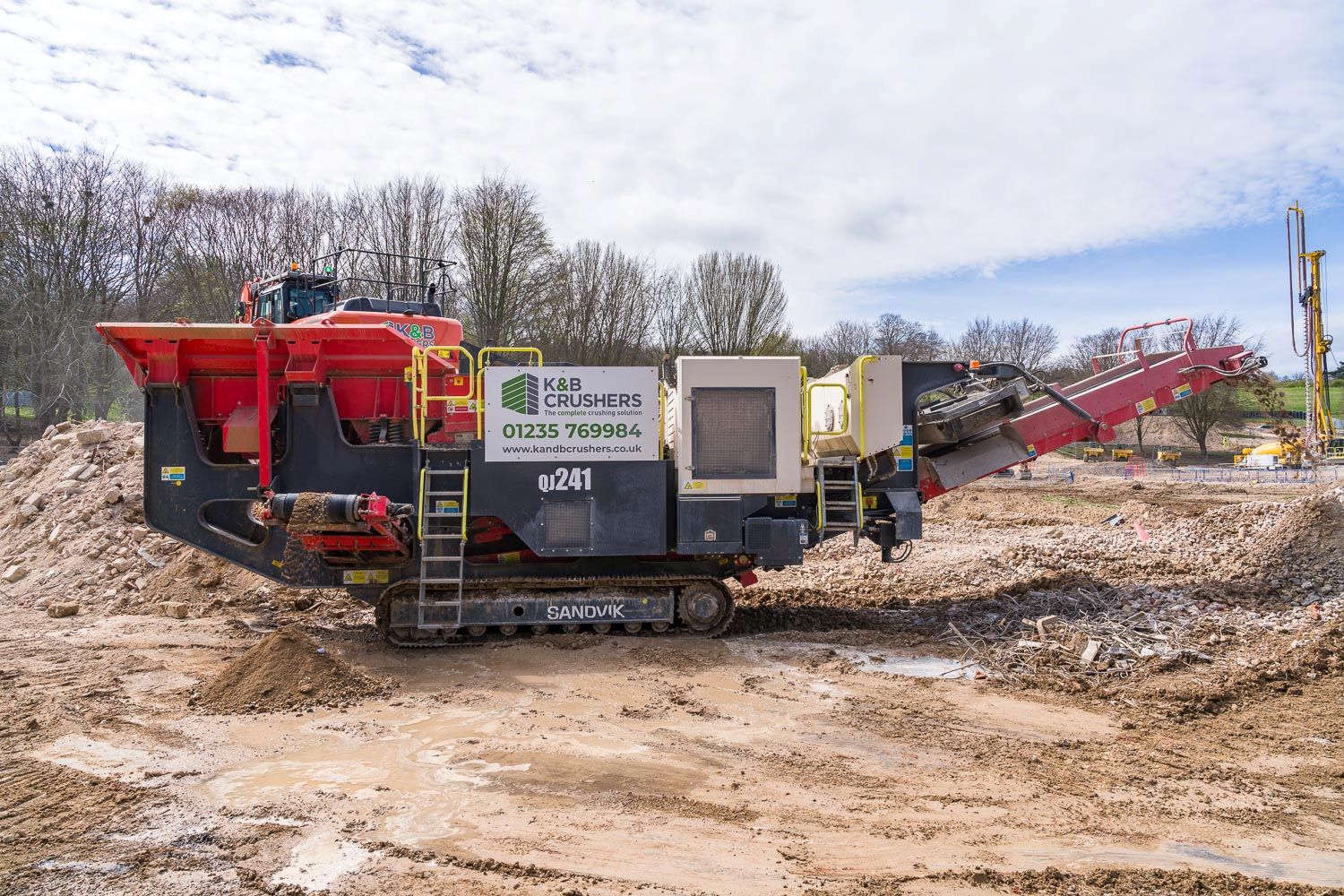 Crushing materials on-site
Crushing materials on-site
HIABs
These lorry loaders are used to deliver and remove small plant and machinery or other tools and equipment to and from our sites.
 HIAB, standing by to assist with lifting operations
HIAB, standing by to assist with lifting operations
Roll-on / roll-off wagons
We utilise roll-on/roll-off wagons for delivering and collecting various types of waste arising from our demolition works.
Tippers
These are used to remove either uncrushed or crushed masonry/brickwork and concrete and transport it for reuse.
Explosive demolitions
Explosive methods may be chosen when demolishing large structures, bridges and chimney stacks, and is a very quick and effective method of demolition. Using this technique, the main supports of the building are fixed with explosives. In these cases, Hughes and Salvidge use a specialist and certified contractor to carry out the weakening and explosion of the structure and assist in all logistics and setting up of explosive zones.
Once the structures are felled and it is safe to return to site, we utilise our plant and machinery to process the materials.
Explosive demolition takes planning and cooperation of all parties and stakeholders, including councils, police and other emergency services.
Find out more
As an audited member of the National Federation of Demolition Contractors, Hughes and Salvidge can guarantee a well-managed and safe demolition project. If you would like to find out more about our demolition services, or any of our machinery, please contact us for more information.

